Cappadocia is one of those rare places on earth that feels more like a fantasy than reality. With its lunar-like landscapes, centuries-old cave dwellings, valleys painted in hues of rose and gold, and skies filled with hot air balloons, it offers travelers an experience unlike any other. If I were visiting Cappadocia, here’s everything I would want to know to make the most out of my journey.
1. First Impressions – A Landscape Straight Out of a Fairy Tale
The first thing that strikes you in Cappadocia is the surreal scenery. Towering fairy chimneys, soft volcanic rock formations carved into homes and churches, and valleys that change color depending on the light make you feel like you’ve stepped into another world. The region’s unique geology is the result of ancient volcanic eruptions, shaped by wind and water over thousands of years. Add in centuries of human history carved directly into the stone, and you get a destination that’s both visually stunning and historically profound.
2. The Hot Air Balloon Experience – Cappadocia’s Signature Adventure
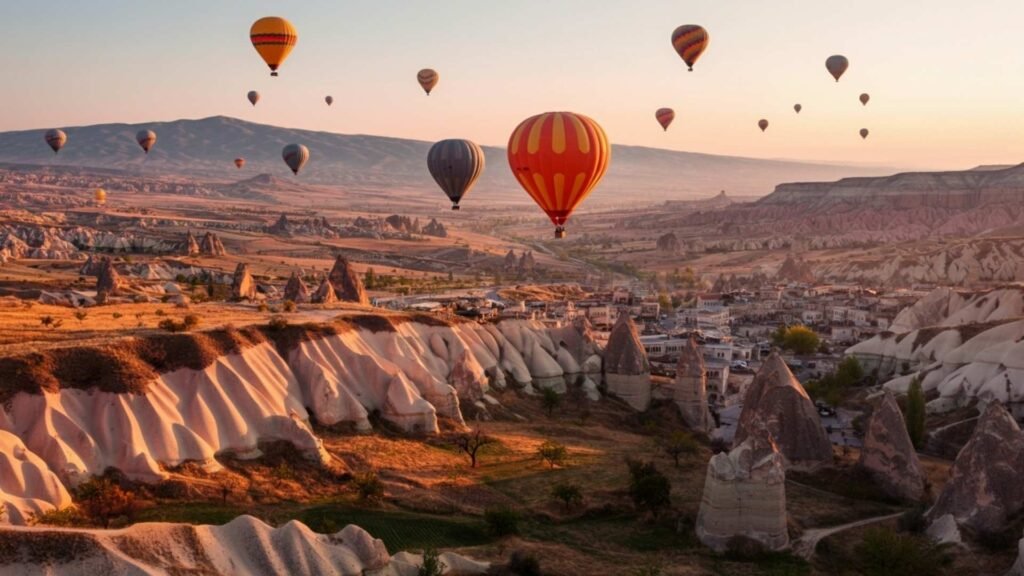
If there is one experience that defines Cappadocia, it’s the magical sight of hot air balloons rising with the sun. Imagine standing in the cool dawn air as the burners roar to life, inflating massive balloons that slowly lift off the ground. Within minutes, the sky fills with dozens — sometimes more than a hundred — colorful balloons drifting gracefully above valleys dotted with fairy chimneys, vineyards, and ancient cave dwellings.
From the basket, the view is nothing short of breathtaking. As the first rays of sunlight paint the landscape in hues of orange, pink, and gold, you drift silently across valleys, soaring above rugged cliffs and then descending low enough to almost brush the tops of vineyards and orchards. The experience is serene, almost dreamlike, as you watch the surreal terrain stretch endlessly in every direction.
For many travelers, this is not just a highlight of their Cappadocia trip, but one of the most unforgettable adventures of their lives.
When to Go
Hot air balloons operate year-round in Cappadocia, but the most popular times are spring (April–June) and autumn (September–October) when the skies are clearer and the weather is mild. Winter flights are also magical, as snow blankets the valleys, creating a fairytale landscape unlike anywhere else. Flights only operate when conditions are safe, so flexibility in your itinerary is helpful.
Booking Tips
- Reserve Early: Especially in peak season, flights can book out weeks in advance. Online booking or booking through your hotel is highly recommended.
- Flight Options: Standard flights last about 1 hour, while deluxe flights can extend to 90 minutes and include smaller baskets for a more intimate experience.
- Cancellations: If flights are grounded due to weather, most operators will reschedule or provide a refund.
What to Expect on the Day
Most balloon experiences begin before dawn. A shuttle picks you up from your hotel and brings you to the launch site, where you enjoy a light breakfast while watching the balloons being prepared. The take-off itself is gentle, and once in the air, the flight is smooth and surprisingly quiet except for the occasional blast of the burner. After landing, many operators celebrate with a glass of champagne or juice and a commemorative flight certificate — a fun way to mark the memory.
Duration & Price
- Duration in the Air: Around 1 hour for standard flights, with deluxe options up to 90 minutes.
- Total Experience: Expect about 3–4 hours, including transfers, preparation, and post-flight celebration.
- Price Range: Typically €150–€250 per person, depending on the season and package. Deluxe or private flights may cost more.
Even if You Don’t Fly
Not ready to take a balloon ride? Don’t worry — simply watching the balloons rise is an unforgettable experience in itself. From hotel rooftops in Göreme or panoramic viewpoints such as Sunset Point, you can enjoy the spectacular sight of hundreds of balloons dotting the sky as the sun rises over Cappadocia. Many travelers even wake up early multiple mornings just to watch this magical display.
3. Other Top Attractions You Shouldn’t Miss
Göreme Open-Air Museum
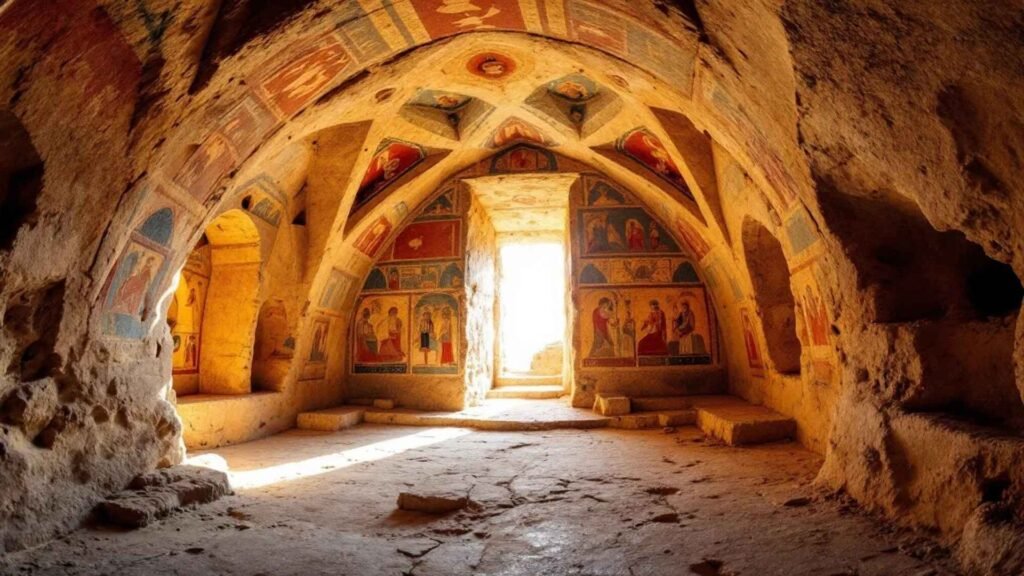
A crown jewel of Cappadocia and a UNESCO World Heritage Site, Göreme Open-Air Museum is a remarkable monastic complex carved directly into volcanic rock. The site features rock-hewn churches, chapels, refectories, and monasteries dating back to the 10th–12th centuries. Many of the interiors are decorated with well-preserved Byzantine frescoes, depicting scenes from the New Testament, the life of Christ, and various saints. Walking through this site feels like stepping back in time to a sacred world, where spirituality and art merged seamlessly. The Dark Church (Karanlık Kilise), with its strikingly vibrant frescoes, is a must-see highlight.
Uchisar Castle
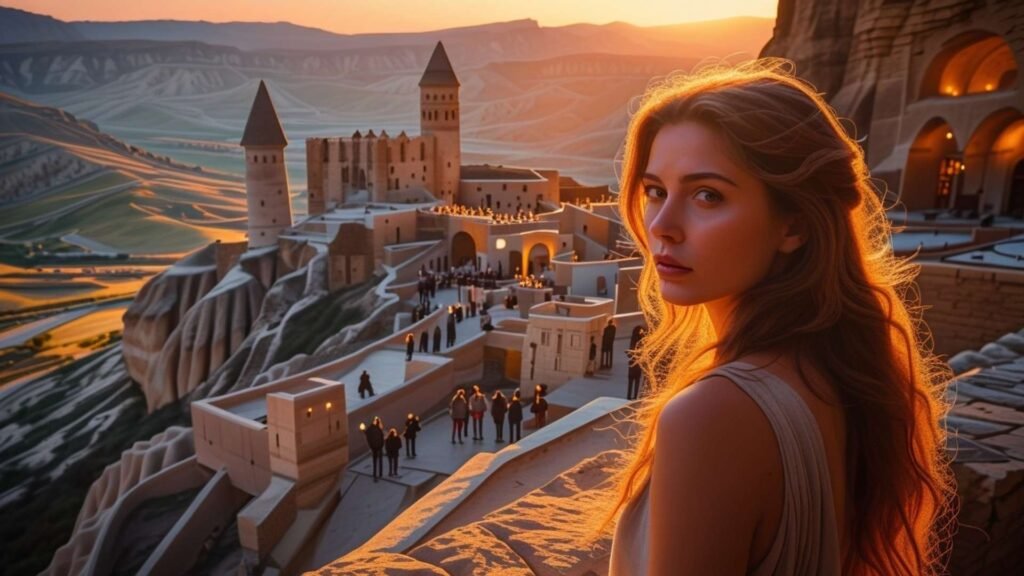
Dominating the skyline of Cappadocia, Uchisar Castle is the region’s natural rock fortress and the highest accessible point. The castle is riddled with carved rooms, passageways, and tunnels that once served as living quarters and lookout points. Climbing to the top rewards visitors with a 360-degree panoramic view stretching over fairy chimneys, valleys, and distant Mount Erciyes. At sunset, the castle becomes a spectacular vantage point, where the golden light enhances the rugged textures of Cappadocia’s landscape. It’s also a great photography location for travelers who want both sweeping vistas and close-up architectural details.
Pasabag (Monks Valley)
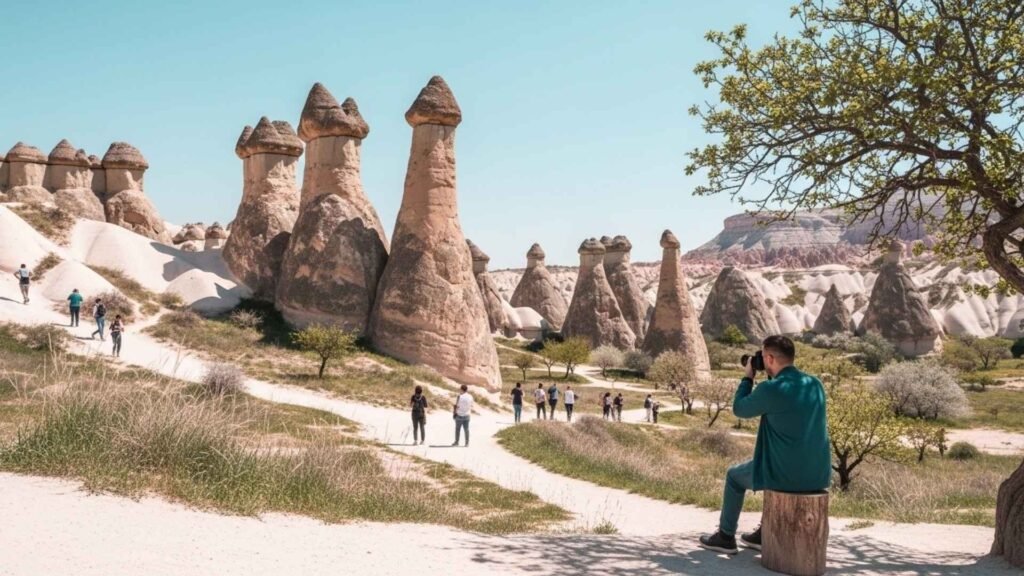
Also known as Valley of the Monks, Pasabag is one of the most iconic and photogenic areas in Cappadocia. It is famous for its towering fairy chimneys, many crowned with double or even triple rock caps. These mushroom-shaped formations are natural wonders shaped by erosion, but they also carry a cultural legacy: hermit monks once retreated here, carving small chapels and hermitages inside the formations. Today, the valley is a favorite for photographers thanks to its dramatic shapes and surreal setting. Sunset is especially enchanting, as the warm light highlights the earthy tones of the rocks.
Avanos
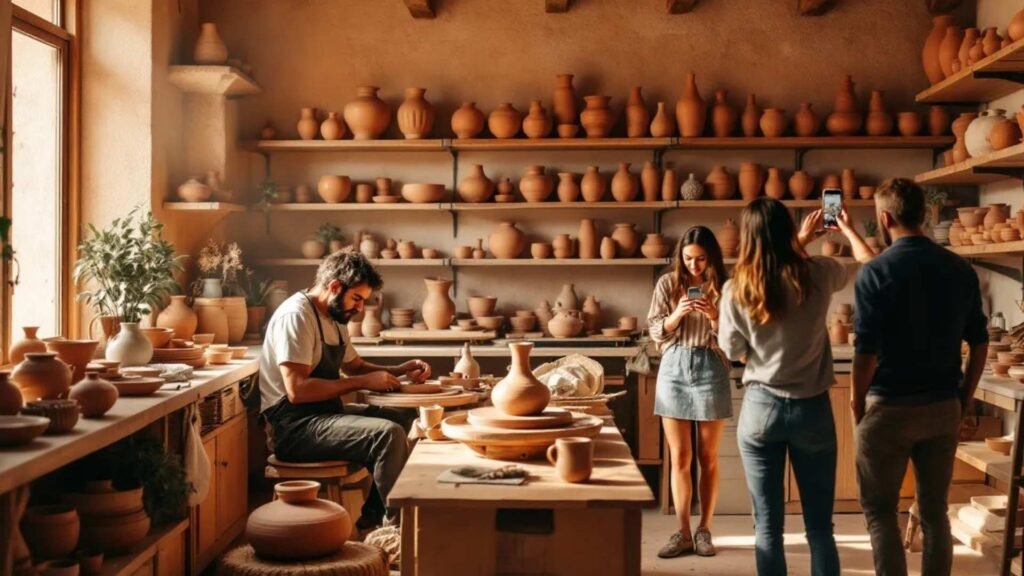
Situated along the Kızılırmak River (the Red River), Avanos is Cappadocia’s artistic soul. This charming town has been a hub for pottery-making since the time of the Hittites, thousands of years ago. Local artisans still use the river’s distinctive red clay to produce handmade ceramics decorated with traditional Anatolian patterns. Visitors can tour family-run workshops, watch demonstrations, and even try their hand at shaping clay on a traditional potter’s wheel. Beyond pottery, Avanos is also known for its riverside cafes, suspension bridge, and relaxed atmosphere, making it a perfect stop to balance sightseeing with cultural immersion.
Zelve Open-Air Museum
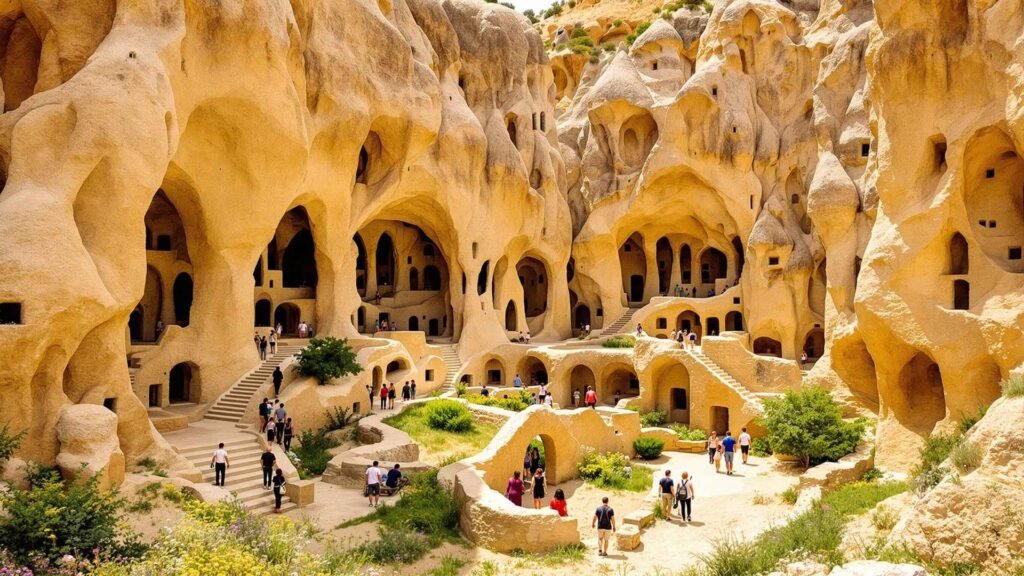
Once a lively cave village inhabited until the mid-20th century, Zelve Open-Air Museum is now an archaeological site spread across three valleys. It offers a more raw and less restored atmosphere than Göreme, giving visitors a stronger sense of what everyday life was like for those who once lived here. The site is filled with rock-hewn dwellings, churches, monasteries, and even a mosque, reflecting the diverse communities that once called Zelve home. Wandering through the tunnels, narrow passages, and cliffside homes feels like exploring a forgotten city frozen in time. Zelve is less crowded than Göreme, making it ideal for travelers seeking a quieter, more immersive experience.
4. Underground Cities – A World Beneath the Earth
Cappadocia is as fascinating below ground as it is above. Beneath its fairy chimneys and valleys lies a vast network of over 30 underground cities, some reaching as many as 10 levels deep. These subterranean settlements were carved into soft volcanic rock, primarily by early Christians and local communities, who used them as shelters against invasions and persecution. What makes them remarkable is not only their size but also the level of sophistication — complete with kitchens, ventilation shafts, storage areas, and even places of worship. Exploring these ancient labyrinths feels like stepping into a hidden world frozen in time.
Derinkuyu Underground City
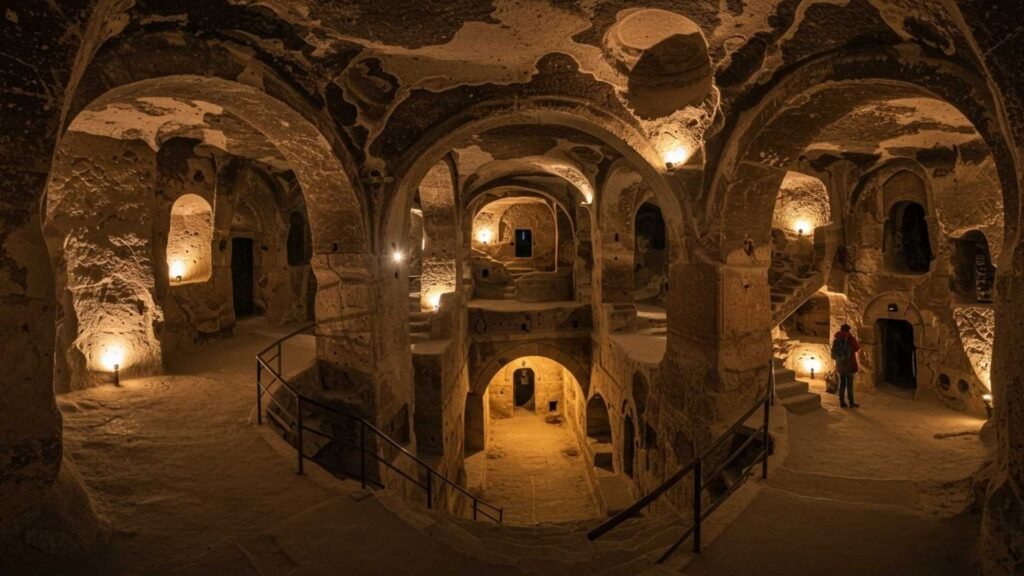
Derinkuyu is the largest and deepest underground city in Cappadocia, stretching approximately 85 meters (279 feet) underground. Archaeologists estimate it could accommodate up to 20,000 people along with their livestock. As you descend through narrow passageways, you encounter:
- Kitchens and Wine Cellars: Complete with chimneys and storage pits carved into the rock.
- Stables: Proof that animals were sheltered underground alongside humans.
- Chapels and Religious Spaces: Offering insight into the spiritual life of its residents.
- Ventilation Shafts: Ingeniously designed to provide fresh air to the deepest levels.
The sheer scale of Derinkuyu leaves visitors amazed at the ingenuity of ancient builders. Walking through its cool, dimly lit corridors makes you wonder how entire communities lived for weeks or even months underground.
Kaymaklı Underground City
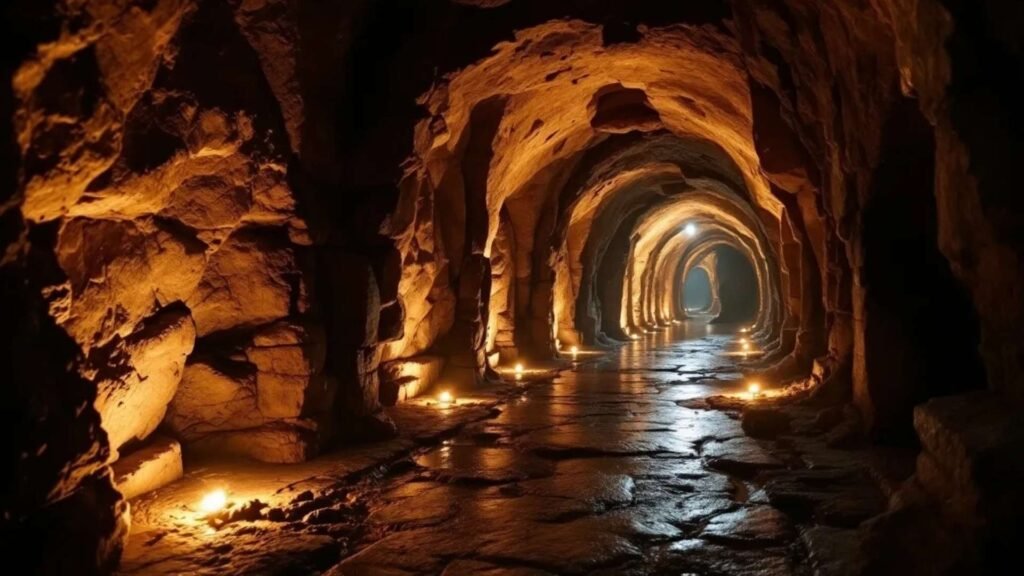
Though smaller and less deep than Derinkuyu, Kaymaklı Underground City is equally fascinating. It features eight levels, four of which are open to visitors. Known for its intricate tunnel system, Kaymaklı reveals the practical daily life of its inhabitants:
- Storage Rooms: Used to keep grain, wine, and other essentials safe from invaders.
- Communal Kitchens: Blackened ceilings still reveal traces of ancient smoke.
- Defense Mechanisms: Heavy stone doors that could roll shut to block intruders.
Kaymaklı feels more compact and easier to explore, giving visitors a more intimate glimpse into Cappadocia’s underground heritage.
5. Hiking the Valleys – Nature and History Hand in Hand
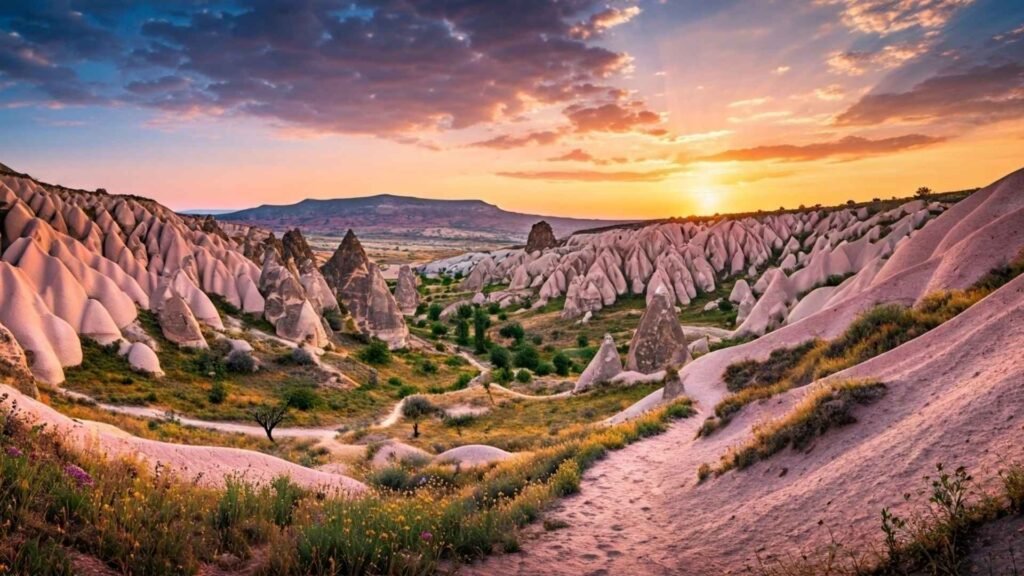
Cappadocia’s valleys are a paradise for hikers and nature lovers:
Rose Valley 🌹
Rose Valley is one of Cappadocia’s most scenic hiking destinations, named after its soft pink-hued rock formations that seem to change color throughout the day. At sunrise, the valley is bathed in pastel tones, but it’s at sunset when the rocks truly glow, shifting from rose to deep crimson. The valley is also dotted with hidden cave churches decorated with centuries-old frescoes, vineyards that still produce local grapes, and panoramic viewpoints perfect for photographers. Many travelers consider it the most romantic spot in Cappadocia, especially for evening walks.
Love Valley 💕
Love Valley is famous for its towering phallic-shaped fairy chimneys, natural formations created by volcanic erosion over thousands of years. While the name adds a playful touch, the valley is more than just a quirky attraction. Its long hiking trail winds through surreal landscapes, offering plenty of opportunities for adventurous exploration. From the valley floor, the giant stone pillars look impressive, but from a higher vantage point, the whole area feels like a natural sculpture garden carved by time itself. It’s a favorite among couples, honeymooners, and photographers looking for unique shots.
Pigeon Valley 🕊️
Named after the thousands of pigeon houses carved into the cliffs, Pigeon Valley is a place where nature and human ingenuity intertwine. For centuries, locals relied on pigeons for fertilizer, which was vital for vineyards and agriculture in Cappadocia’s volcanic soil. Today, the valley offers a picturesque hiking trail that connects Uçhisar and Göreme, filled with lush greenery, carved tunnels, and panoramic lookouts. The sight of countless pigeon niches carved into soft rock gives the valley a unique character, blending history with natural beauty.
Ihlara Valley 🌿
Unlike the other valleys of Cappadocia, Ihlara Valley feels like a hidden oasis. This 14-kilometer-long gorge is carved by the Melendiz River, creating a lush, green canyon that contrasts with Cappadocia’s arid terrain. Along the riverside path, you’ll find more than 100 rock-hewn churches and monasteries, many adorned with frescoes dating back to the early Christian period. The gentle sound of flowing water, shaded trails, and small cafes tucked along the way make it a perfect retreat for hikers looking to combine natural beauty with history.
✨ Why These Valleys Are Special:
Each valley in Cappadocia tells a different story — Rose Valley is romantic, Love Valley is surreal, Pigeon Valley is cultural, and Ihlara Valley is spiritual. Together, they offer a complete journey through the region’s landscapes, history, and traditions.
6. Food & Local Cuisine – Tastes of Cappadocia
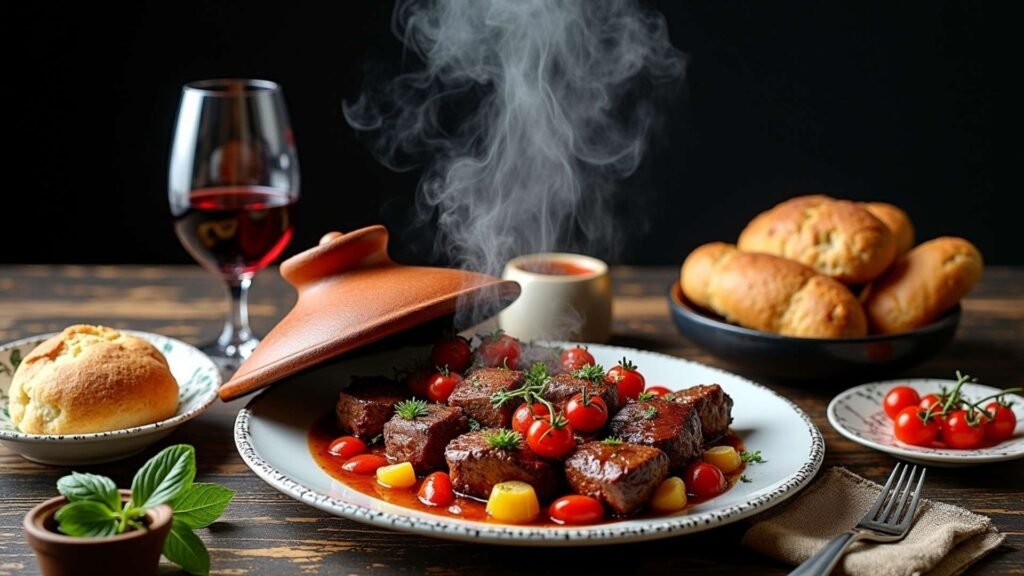
Cappadocia’s food culture is a journey in itself.
- Testi Kebab (Pottery Kebab): Meat and vegetables are sealed in a clay pot and slow-cooked, then dramatically cracked open at your table.
- Turkish Manti: Tiny dumplings topped with garlic yogurt and spicy butter sauce.
- Clay-Oven Bread & Local Cheeses: Often served in cave restaurants, giving a rustic authenticity.
- Cappadocian Wine: The volcanic soil produces excellent grapes. Be sure to try a glass of the region’s award-winning wines.
7. Shopping & Souvenirs
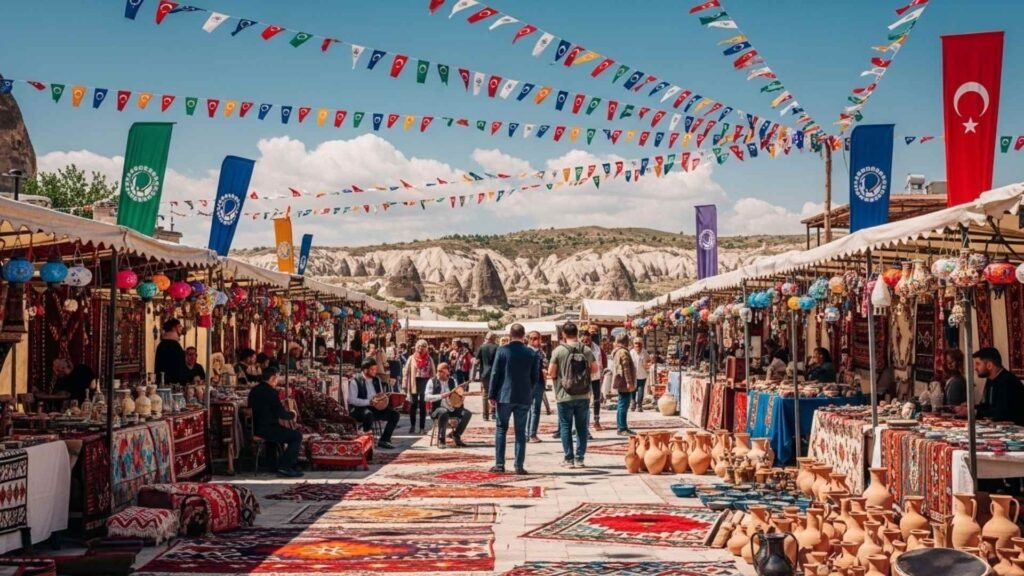
Cappadocia is a great place to shop for authentic Turkish handicrafts:
- Avanos Pottery: Handmade ceramics decorated with Ottoman and Anatolian patterns.
- Carpets & Kilims: Each piece is a unique work of art, with traditional motifs that carry symbolic meanings.
- Onyx Stone & Jewelry: Locally mined volcanic stone crafted into jewelry and decorative objects.
8. Festivals & Cultural Events
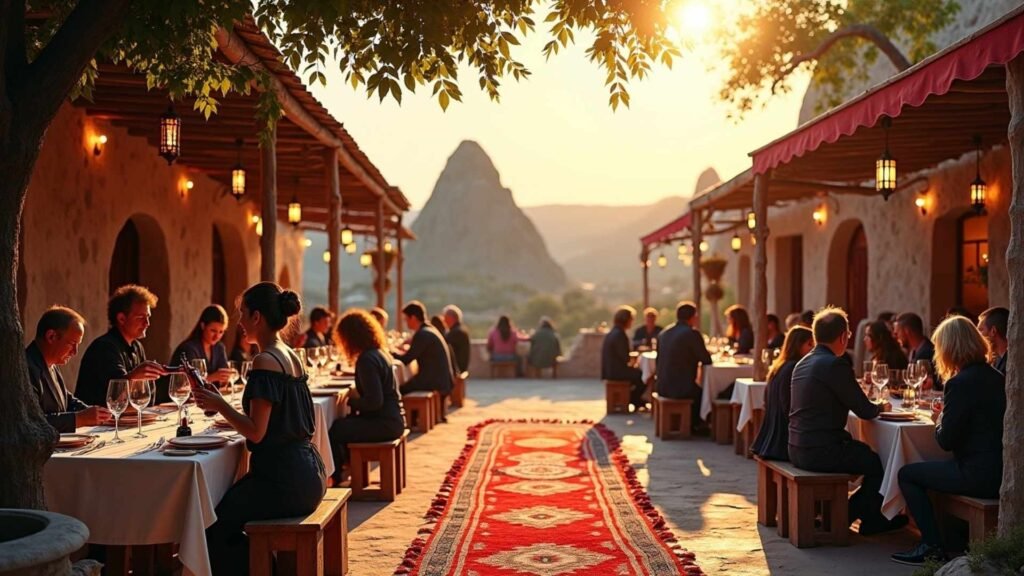
Cappadocia comes alive with cultural celebrations throughout the year:
- Cappadocia International Hot Air Balloon Festival (July): A spectacle with hundreds of balloons taking to the sky.
- Avanos Tourism and Handicrafts Festival: A celebration of traditional arts, crafts, and local culture.
- Harvest & Wine Festival (September): A must for wine lovers, offering tastings and vineyard tours.
9. Where to Stay – The Cave Hotel Experience

One of the most unforgettable parts of a trip to Cappadocia is spending the night in a cave hotel. These accommodations, carved directly into the region’s soft volcanic rock, offer a rare chance to sleep inside history while enjoying modern comforts. From luxury suites with private terraces to family-run guesthouses brimming with authenticity, cave hotels provide both character and comfort.
🏰 Luxury: Museum Hotel (Uçhisar)
Perched on a hilltop in Uçhisar, the Museum Hotel is Cappadocia’s only Relais & Châteaux property and is often ranked among the best boutique hotels in Turkey.
- What Makes It Special: Each room is uniquely designed, blending restored cave dwellings with curated antiques, creating the feeling of staying inside a living museum.
- Views: Panoramic terraces overlook the valleys, and hot air balloons often drift past your window at sunrise.
- Extras: A heated outdoor pool with a view of fairy chimneys, fine-dining restaurants serving gourmet Turkish cuisine, and world-class hospitality make it a top choice for honeymooners and luxury travelers.
🌅 Mid-range: Sultan Cave Suites (Göreme)
Located in Göreme, Sultan Cave Suites has become iconic thanks to its rooftop terrace, where travelers gather at dawn to take postcard-perfect photos of balloons rising above the valley.
- What Makes It Special: Rooms are carved into the rock but decorated with colorful Turkish textiles, combining tradition with warmth and style.
- Experience: Guests can enjoy traditional breakfasts on the rooftop while watching dozens of balloons float in the morning sky.
- Vibe: It’s a favorite among couples, photographers, and social media travelers who want both comfort and that “Instagram-famous” Cappadocia experience.
🏡 Budget: Kismet Cave House (Göreme)
For those seeking an affordable yet authentic stay, Kismet Cave House offers a warm, family-run atmosphere.
- What Makes It Special: The hotel preserves its natural cave interiors while adding cozy touches like handmade carpets, stone archways, and traditional décor.
- Experience: Guests often highlight the owner’s personal hospitality — from arranging tours to sharing local tips — which makes the stay feel more personal and intimate.
- Why Stay Here: Perfect for budget-conscious travelers who want a genuine Cappadocian experience without sacrificing comfort or charm.
✨ Insider Tip
- Book Early: Cave hotels are in high demand, especially those with iconic rooftop views of the balloons. Reservations often fill up weeks in advance during spring and autumn.
- Location Choices:
- Göreme: Central, lively, and ideal for first-time visitors.
- Uçhisar: Quieter, upscale, and offers the best panoramic views.
- Ürgüp: A mix of boutique and luxury hotels, with easy access to vineyards and cultural experiences.
👉 Staying in a cave hotel isn’t just about having a place to sleep — it’s about living Cappadocia’s history while enjoying modern comforts. Whether you’re sipping wine on a terrace, waking up to balloons outside your window, or cozying up in a rustic stone room, it’s an essential part of the Cappadocia experience.
10 Practical Tips for Visitors
- Best Time to Visit: April–June and September–October for mild weather and fewer crowds.
- Getting There: The nearest airports are Kayseri Erkilet (ASR) and Nevşehir Kapadokya (NAV). Shuttles and private transfers are widely available.
- Getting Around: Renting a car offers flexibility, but guided tours are ideal for covering multiple attractions efficiently.
- Cultural Etiquette: Respect ancient churches and frescoes; avoid touching or leaning on them. Dress modestly when visiting religious sites.
11. Why Cappadocia Stays With You Forever
Cappadocia isn’t just about sights — it’s about feelings. Watching the sunrise from a balloon, hiking through valleys where history whispers from every rock, sipping wine made from volcanic soil, and sleeping in a cave carved centuries ago — all of it lingers long after you leave.
This is not a “quick stop” destination. To truly feel Cappadocia, spend at least 3–4 days. Give yourself time to watch the balloons, explore the valleys, dive underground, and simply sit back and let the magic unfold.
✨ Final Thought: Cappadocia is more than a place — it’s an experience that blends nature, history, culture, and imagination. It’s a land that captivates your eyes, stirs your soul, and leaves you with memories that feel like a dream.

